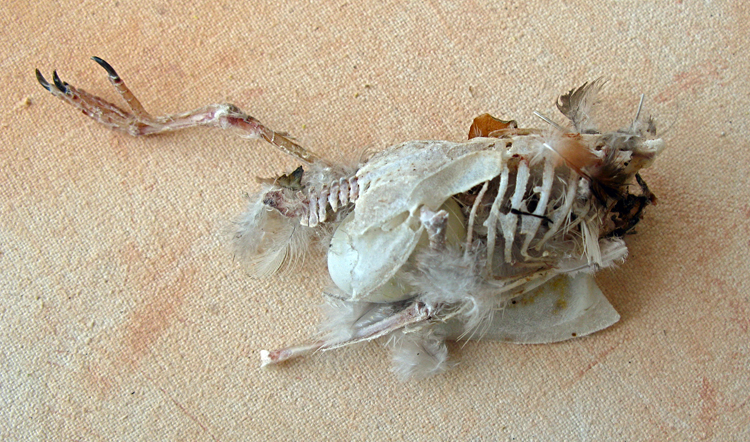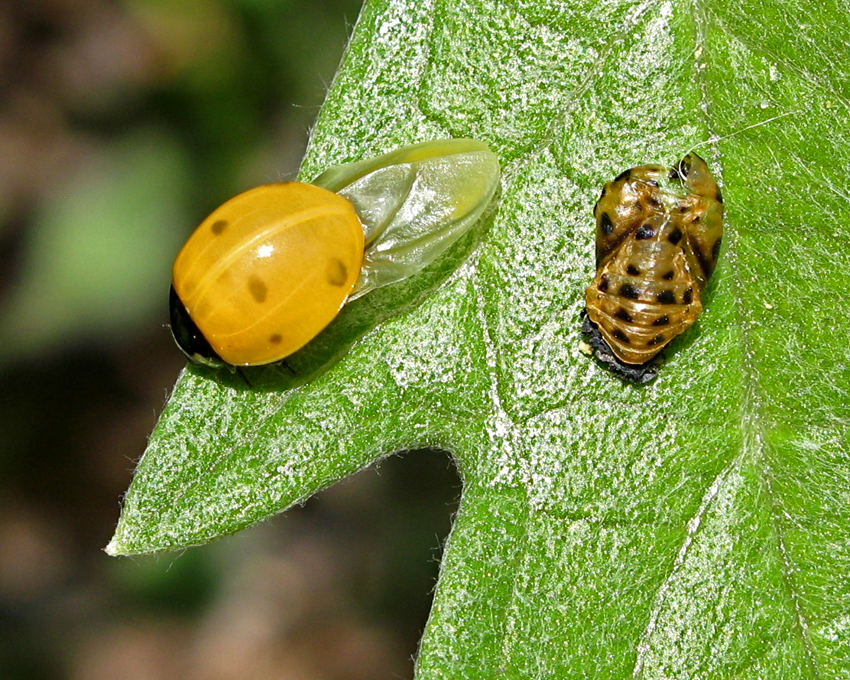 This time of year the world is pregnant with nests full of eggs, tiny cottontails hopping and hiding in the yard, fledgling birds following their parents food-begging insistently, new yellow-green leaves and catkins on the mesquite trees, and glorious cactus blooms.
This time of year the world is pregnant with nests full of eggs, tiny cottontails hopping and hiding in the yard, fledgling birds following their parents food-begging insistently, new yellow-green leaves and catkins on the mesquite trees, and glorious cactus blooms.
<< Praying mantis egg-case on a Palo Verde twig  (photo E.Shock). >> close-up of a mesquite catkin (photo A.Shock)
(photo E.Shock). >> close-up of a mesquite catkin (photo A.Shock)
But as this acceleration of generation increases, we see another side of abundance: broken eggs on the ground, young birds not experienced enough to stay out of the street, small mammals learning the hard way about the swimming pool, an adult gopher snake swallowing a tiny cottontail.
Spring is a scavenger’s prime-time. We’ve been watching an Inca Dove carcass decompose under the tangerine tree. In the dry desert, this isn’t a grisly thing: if not enjoyed by raccoons, foxes, or feral cats, the soft parts are quickly consumed by the local scuttling scavengers, usually ants or dermestid beetles and the like. Inca Doves are small, anyway — there’s not much to them, and small bodies don’t have time to bloat, liquefy, or smell very much.
time to bloat, liquefy, or smell very much.
>> Inca dove skeleton (photo A.Shock)
Decomposition is short and if not sweet, at least efficient. What was an intact dove carcass lying in the leaf litter a couple of days ago was, by yesterday, an articulated partial skeleton. The head was gone, but the ribs were still festooned with a few feathers, and the pelvis dangled two femurs and a foot.  The ants’ tidy de-fleshing revealed a possible cause of death invisible to us before: egg-binding. Look below the rib-cage under the vertebrae and pelvis, and you can see an intact egg, cracked but still heavy with its contents, in place in the abdominal cavity.
The ants’ tidy de-fleshing revealed a possible cause of death invisible to us before: egg-binding. Look below the rib-cage under the vertebrae and pelvis, and you can see an intact egg, cracked but still heavy with its contents, in place in the abdominal cavity.
<< Here’s a side-view. The large blade-shaped bone on the right is the little dove’s keel, or breast-bone; the egg sits snugly — perhaps a little too snugly — under the tiny pelvis.
I don’t have my own photo of an Inca Dove — although they’re common in our yard, they’re camera-shy, at least in my experience. But if you need the reassurance of a living image, or more info about Inca Doves, click here, for the Cornell Lab of Ornithology entry on the species.
And just to sweeten the pot because after all it is the holiday season, here’s a photo I posted last spring, of two terribly tiny bunnies snuggled into the form their mother scraped out for them. Go ahead; click to enlarge to see their tiny fluffy details. It was either this or one of the gopher snake eating a baby cottontail, but I think I’ll save that for next Easter.
terribly tiny bunnies snuggled into the form their mother scraped out for them. Go ahead; click to enlarge to see their tiny fluffy details. It was either this or one of the gopher snake eating a baby cottontail, but I think I’ll save that for next Easter.
>> two infant cottontails stashed in a form (photo A.Shock)
 I’ve identified it as Manduca rustica, the Rustic Sphinx (if you know different, please let me know), which as an adult moth feeds on deep-throated nectar flowers such as Petunias and Tecoma.
I’ve identified it as Manduca rustica, the Rustic Sphinx (if you know different, please let me know), which as an adult moth feeds on deep-throated nectar flowers such as Petunias and Tecoma. That I got any results worth sharing is a bit amazing, since the lens, which is designed for a different cell phone than the one I own, has to be scotch-taped to the device. (Seriously, scotch-taped to the device, not exaggerating.)
That I got any results worth sharing is a bit amazing, since the lens, which is designed for a different cell phone than the one I own, has to be scotch-taped to the device. (Seriously, scotch-taped to the device, not exaggerating.)












